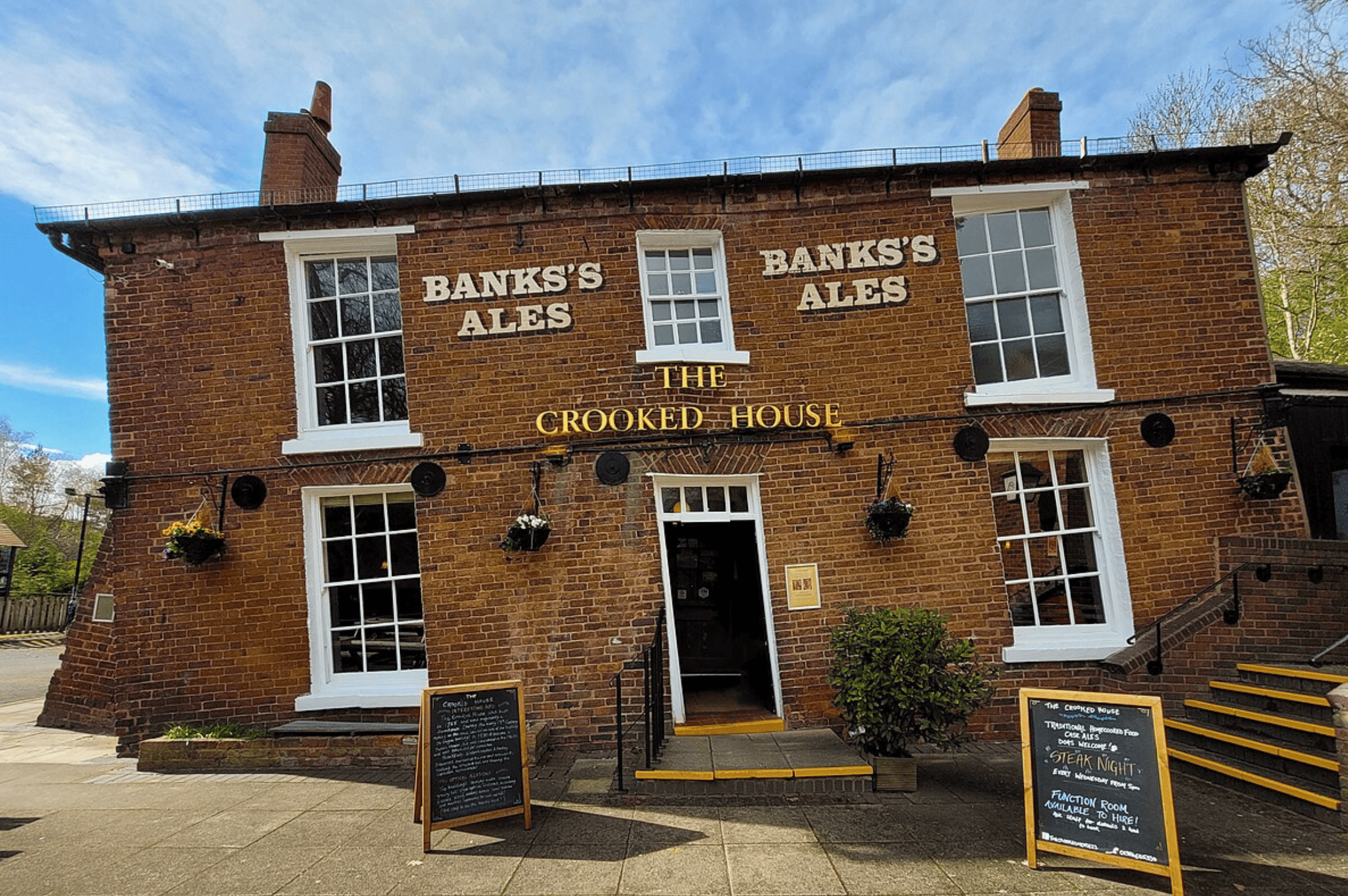Britain has lost its “wonkiest pub”! Architectural Technologist Joseph Cattmull looks at the history of the only place you can feel drunk without spending a penny, and the options available for this iconic cornerstone of village life following the devastating fire.
Constructed in 1765 in the Black Country village of Himley, The Crooked House was originally a farmhouse at Oak Farm, however due to subsidence caused by historical mining in the area, one side of the building now measures roughly 4ft lower than the other. Rather than seeing this as a negative, the owners used this to create a pub full of optical illusions.
I was fortunate enough to visit the pub recently, it was a pub like no other. One of the customers appeared to be rolling a marble up the bar, defying gravity. When we sat to have our pints I appeared to dwarf my friend who normally towers over me, reminding me of the camera trickery used in Lord of the Rings to film the hobbits. Upon leaving the pub, you got the weirdest feeling from walking on level ground again.
Devastatingly, the pub recently made national headlines for all the wrong reasons. Burning to the ground over night in a suspected arson attack. Conveniently, according to The Mirror, there was a digger hired on site already which was quickly used to demolish the pub following the fire.
As the dust settles, questions about the future of the Crooked House arise. The burning question is whether the Crooked House will be rebuilt, and if so, in what form? While rebuilding “like for like” seems like a natural step to preserve the heritage and memory associated with the landmark, decisions about its reconstruction are laden with complexity.
The possibility of rebuilding the Crooked House “like for like” might be met with both enthusiasm and apprehension. On one hand, recreating the iconic structure could be seen as a way to honor its legacy and maintain its historical significance. Reuniting the village of Himley with its beloved pub.
On the other hand, some might argue that attempting to replicate the Crooked House exactly might detract from its authenticity. The original charm was a product of generations of use, subsidence, and the passage of time. A meticulous recreation might lack the same sense of history and character that the original building possessed.
The UK does have a history of forcing property owners to rebuilt their demolished buildings like for like. In 2015 developers demolished The Carlton Tavern two days before it was due to be listed. A planning application on the site had been refused to convert the building into 10 flats, following this & two days before it was due to become grade II listed by Historic England, the developers ordered its demolition.
Swiftly the locals were onto the local council demanding action and luckily Historic England had taken plaster casts of every tile and had plenty of photographic documentation of how the building was. This lead to an order being passed for the pub to be rebuilt brick by brick. What was done well, was the reuse of old timbers showing the damage from the demolition. This adds to the history of the building, providing it with further character to add to its charm.
Back to the Crooked House, it is my belief, alongside our Heritage Expert Ruth Gray, that the pub be rebuilt brick by brick. They should follow in the footsteps of the Carlton Tavern in recovering what they can and trying to add to the buildings story within the rebuild. Unique pubs such as this are a special asset to communities and they need to be protected.
Joseph Cattmull, Architectural Technologist, Planning & Design Practice Ltd
Main Image: Wikipedia



